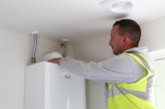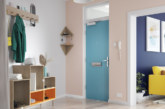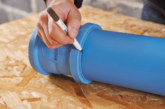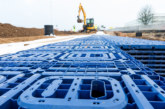LABM looks at PipeSnug, a simple product that is saving time on pipework installation and helping to maintain the thermal and aesthetic integrity of a building’s fabric.
The Government’s Clean Growth Strategy announced a new target to get all housing up to Energy Performance Certificate (EPC) Band C by 2030. With budgets constrained, and restrictions in place on how much rents can be increased, by social housing providers are looking at long-term asset management budgets to upgrade properties. That is not to say there are no improvements that can be made at little extra cost.
Take PipeSnug for example, launched two years ago it is a simple innovation that enables local authority building and maintenance managers to improve the fabric of a building as well as its aesthetics. PipeSnug makes installing waste pipes easier and replaces the need to point mortar around pipes where they exit the wall. Its quick ‘fit and forget’ properties also reduce the need for callbacks and the need for post-installation maintenance.
Manufactured in the UK, PipeSnug is patent pending and designed to seal the hole where a pipe exits a wall. The product’s snug fit means that it helps to maintain the energy efficiency of the property, by tightly filling in any gaps where heat would otherwise escape.
The National House Building Council (NHBC) points out that the two most common areas where air leakage is a problem are around service penetrations (i.e. pipework) and behind fitted units. This solution helps specifiers to comply with Part L of the Building Regulations and keeps the risk of heat escaping from a building to a minimum.
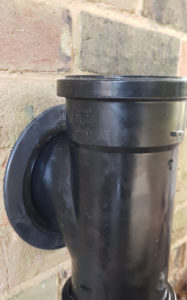 All weather solution
All weather solution
Traditionally, the job PipeSnug replaces is done by pointing or sealing the hole with mortar, silicone or expanding foam, which can become very messy to prepare and use, and can spoil the look of a building’s exterior. The holes around the pipes are often left unfilled because it’s a pain for tradespeople to do. In addition, over time mortar can crack and fall out and silicone can come away from the wall, so you end up with heat loss from the building, as well as then allowing ingress of pests.
Quicker, more cost-effective, and cleaner than all these methods, it can be used in all weathers on any plumbing or construction project, including new-builds, extensions, loft conversions and kitchen or bathroom installations — giving the job a quicker, smarter finish.
While long-term budgets and planning will be required to bring housing stock up to the minimum standards set by government, products such as this are already providing a simple yet effective solution which saves installation time, and improves on traditional building methods.


